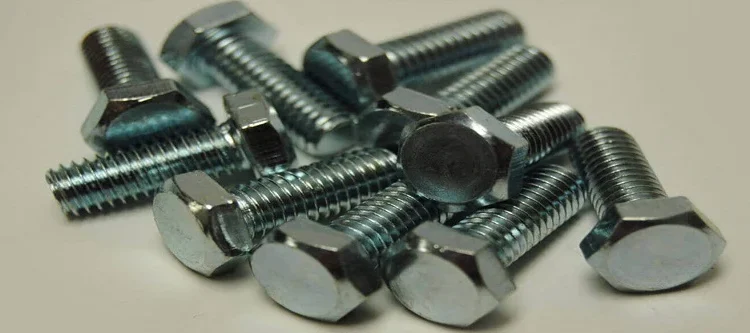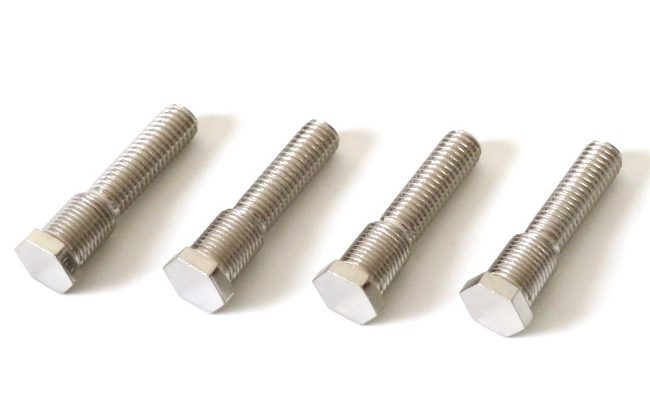
Which is better 304 or 316 stainless steel bolts
316 stainless steel bolts are better for harsh environments due to their 2-3% molybdenum content, enhancing corrosion resistance in chloride-rich settings by over 50% compared to 304.
Corrosion resistance
304 stainless steel contains 18% chromium and 8% nickel, and this alloy composition makes it have good oxidation resistance in general indoor environment. At room temperature and low corrosive environment, the corrosion resistance time of 304 stainless steel can be more than 20 years, while the corrosion resistance time of ordinary carbon steel under the same conditions is usually not more than 5 years.
316 stainless steel adds 2% to 3% molybdenum, which increases its corrosion resistance in a high chlorine environment. When 316 stainless steel bolts are used in chemical plants, even if they are exposed to chloride for a long time, the corrosion rate is much lower than 304 stainless steel. 316 stainless steel in an environment containing 1000ppm chloride ions, corrosion resistance is at least 50% higher than 304.
In standard salt spray tests, 304 stainless steel usually begins to show signs of rust within a few days, while 316 stainless steel can be maintained for weeks or even months without obvious rust. This is because the molybdenum element of 316 plays a key role in preventing corrosion caused by chlorides.
304 stainless steel bolts used in seaside cities may need to be replaced every 3 to 5 years, while 316 stainless steel bolts may be replaced every 10 years. In the long run, the total cost of ownership (including purchase, maintenance and replacement costs) of 316 stainless steel may be lower than 304.
In the construction of seaside docks, if you choose to use 304 stainless steel bolts, it may cause structural safety problems due to corrosion, and choose 316 stainless steel bolts can significantly extend the service life of the structure and reduce maintenance costs. The use of 316 stainless steel in the Marine environment of the structure, its life can be 30% to 50% longer than the use of 304 stainless steel.

cost
Because 304 stainless steel does not add molybdenum, its cost is about 20% to 30% lower than 316 stainless steel. The price of common 304 stainless steel bolts is about 20 yuan per kilogram, while the price of 316 stainless steel bolts of the same specification is about 26 yuan per kilogram. This price difference is mainly due to the addition of molybdenum in 316 stainless steel, molybdenum is an expensive material to improve corrosion resistance.
In chemical plant environments containing more chloride ions, 304 stainless steel bolts need to be inspected every 1 to 2 years to prevent corrosion damage, while 316 stainless steel bolts are inspected every 5 years. Assuming that the cost of each inspection and replacement is 500 yuan, the maintenance cost of using 316 stainless steel will be lower.
In office buildings and commercial centers, the choice of 316 stainless steel may lead to unnecessary cost increases. In the seaside or other high salt spray environment, although the initial cost of 316 stainless steel is higher, due to its longer replacement cycle and lower maintenance frequency, it can actually save a lot of later maintenance and replacement costs. The total cost of ownership of 316 stainless steel bolts is typically about 15% to 25% lower than that of 304.
If 1000 kg of stainless steel bolts are installed, the initial investment cost for 304 and 316 is 20,000 yuan and 26,000 yuan respectively. Considering that 304 May need to be replaced or repaired at least once in three years, at a cost of 5,000 yuan each time, while 316 May not need maintenance for five years, the total cost of 304 in the long run is 25,000 yuan and the total cost of 316 is 26,000 yuan.

Apply
In homes and commercial buildings, 304 stainless steel can effectively resist moisture and minor chemical corrosion in the daily environment. In commercial kitchen installations, 304 stainless steel bolts are used to secure stainless steel equipment and countertops. Due to the frequent cleaning of commercial kitchens and the milder cleaners used, the corrosion resistance of 304 stainless steel is fully able to meet the needs.
In the construction of oil platforms, 316 stainless steel bolts are widely used to fix external structures to withstand seawater and chemical corrosion, significantly extending service life and reducing maintenance needs.
316 stainless steel can withstand high frequency of disinfection and cleaning and performs well in handling chlorine-containing disinfectants, which guarantees the durability and medical safety of the instrument.
In the manufacture of transportation vehicles, especially in the production of ships and vehicles, 304 stainless steel bolts are often used in the interior decoration and non-critical parts of vehicles. 316 stainless steel bolts are more suitable for external devices of ships, such as fixed equipment on the deck, which can resist the erosion of seawater and Marine atmosphere to increase the service life of the equipment.
Water and wastewater treatment facilities often use strong oxidants and various chemical treatment processes, 316 stainless steel can effectively resist the corrosion of these chemicals, in urban sewage treatment plants, 316 stainless steel bolts are used for critical water pipes and filter fixation, ensuring the long-term reliability and efficiency of the system.



